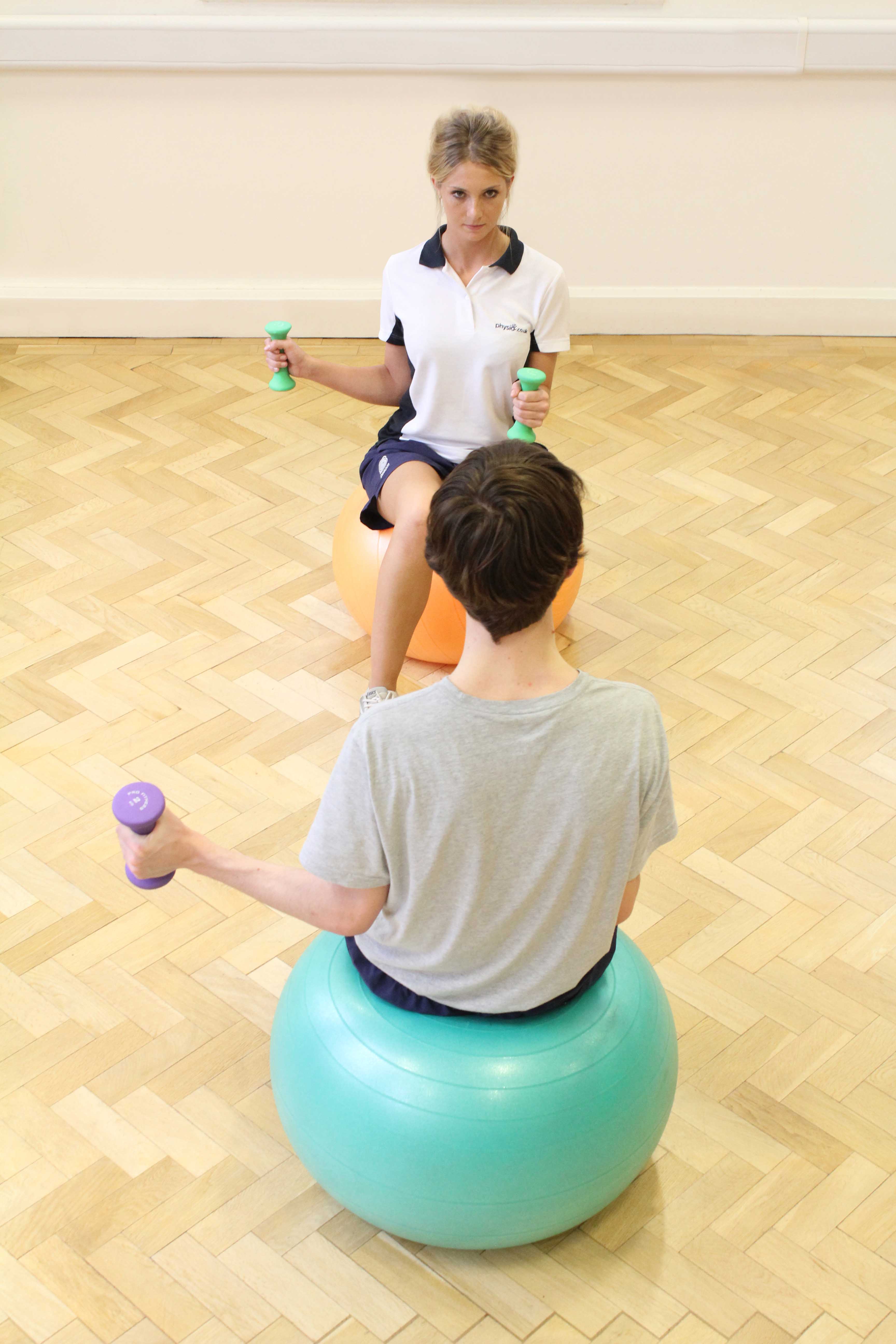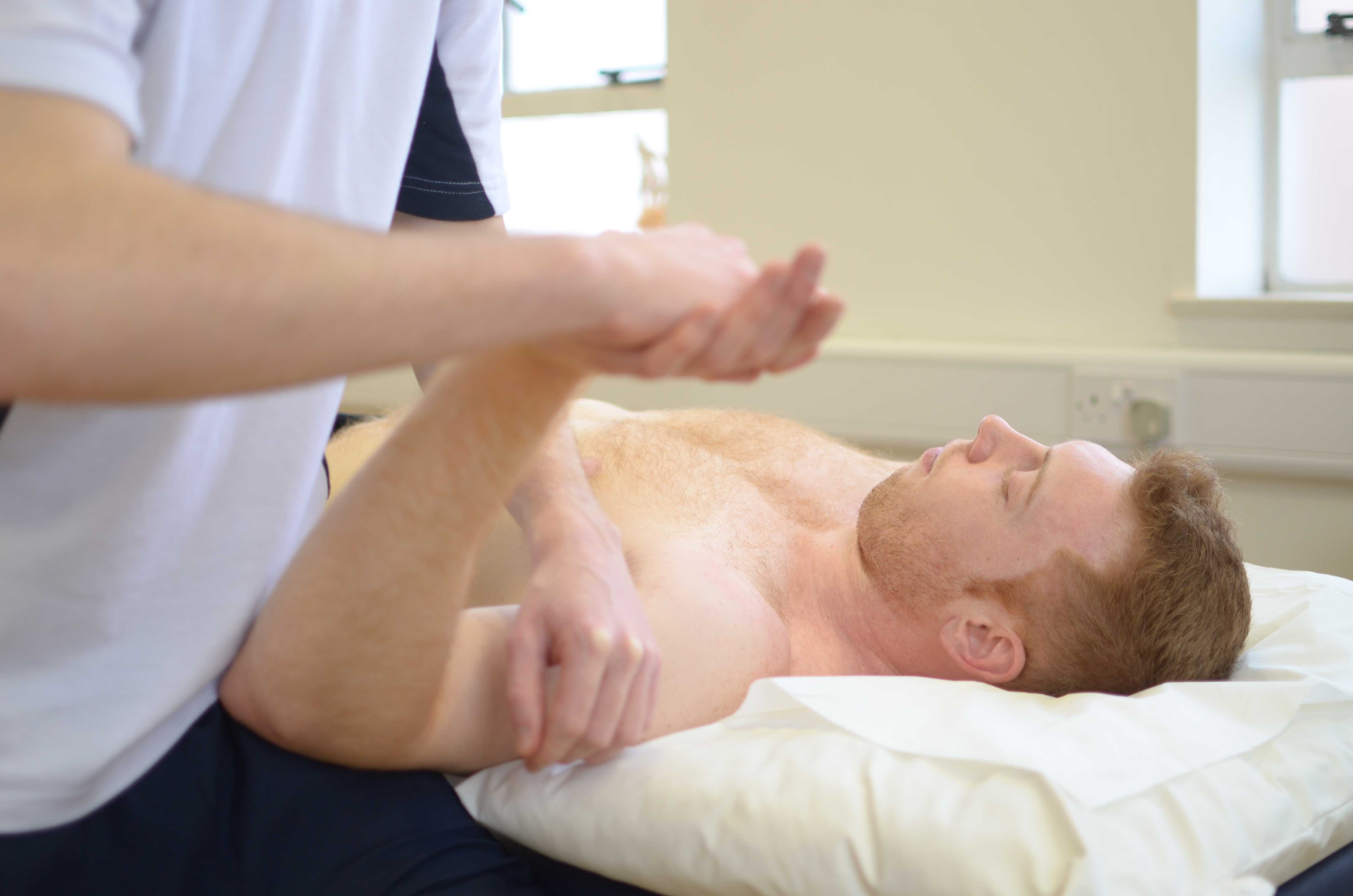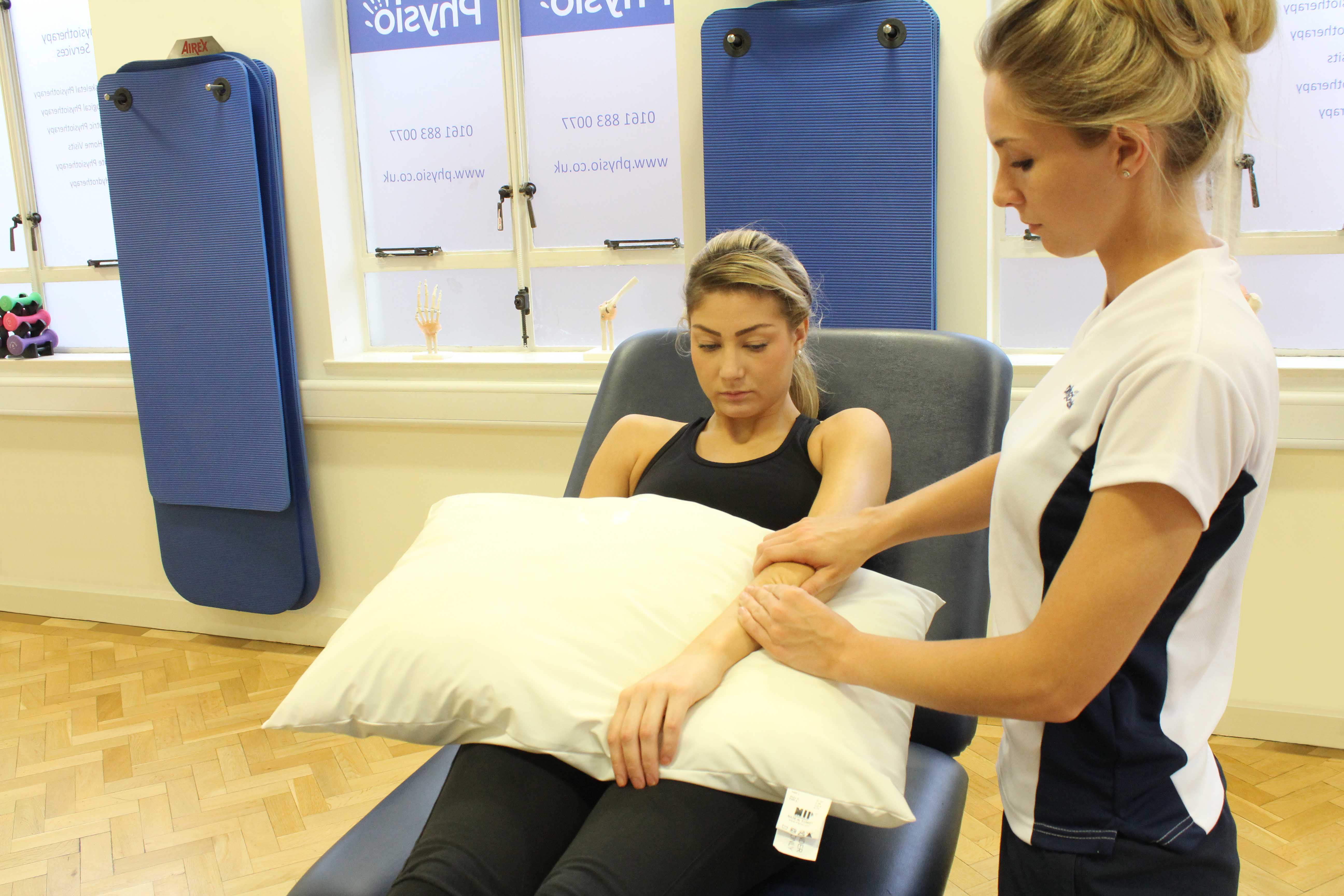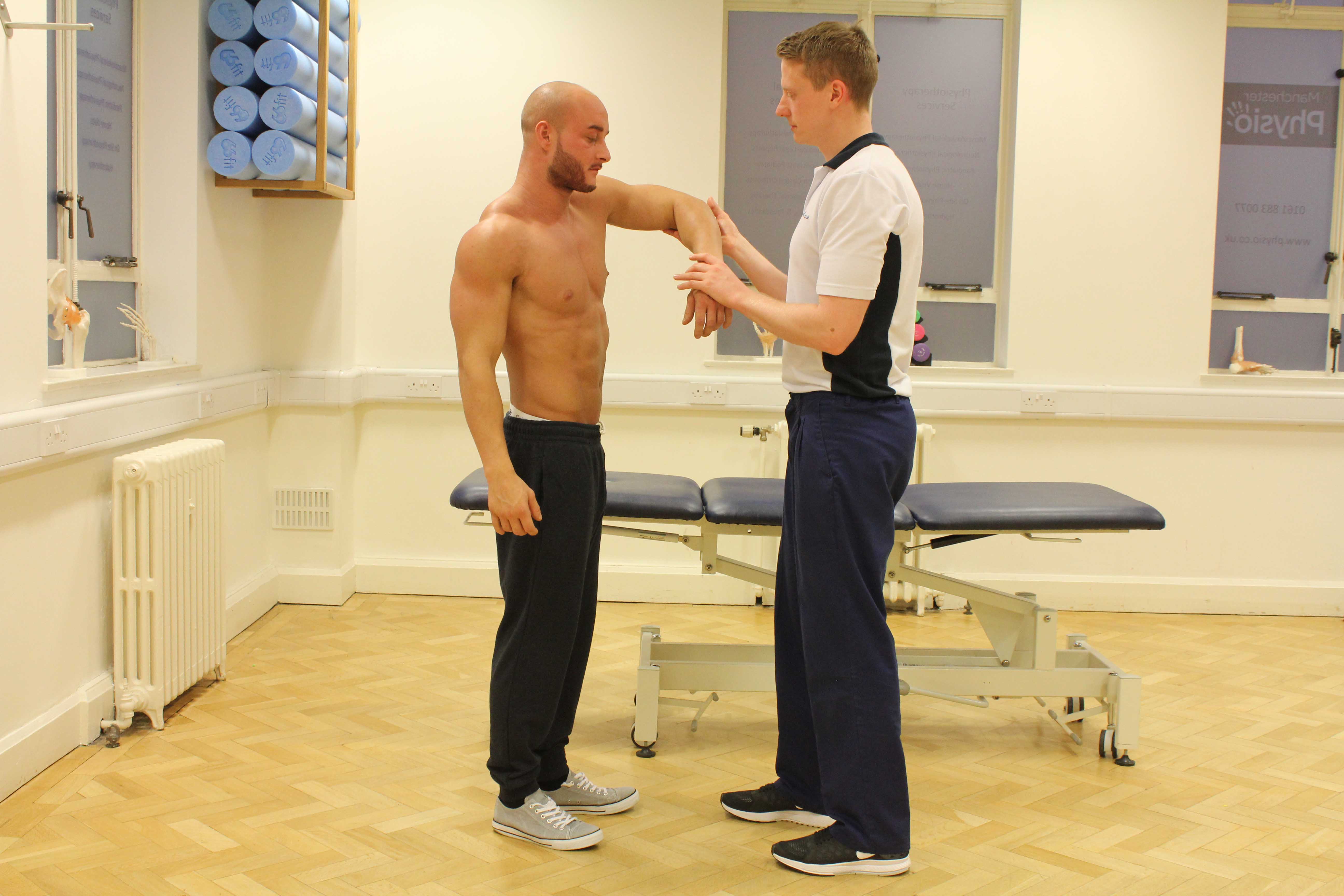What is a hip arthroscopy?
A hip arthroscopy involves a camera being inserted into the hip to repair cartilage tears or treat any loose pieces of cartilage. It is often termed key whole surgery and is performed under general anaesthetic.
The camera is placed inside the joint through a small incision in the skin to repair any damage. The benefit of a hip arthroscopy is that it is less invasive than a traditional hip replacement. Physiotherapy is vital for a good recovery. Early physiotherapy treatment will help you recover faster and return to your lifestyle or sporting activities sooner.
 Above: Passive stretch of the hip joint and surrounding connective tissues
Above: Passive stretch of the hip joint and surrounding connective tissuesPhysiotherapy before a hip arthroscopy
Physiotherapy before your operation is important in order to aid in your recovery. Physiotherapy treatment before your operation will involve exercises to strengthen the muscles around your hip joint and to keep your muscles as flexible as possible. Activity that you enjoy for example, walking and swimming are advised in the weeks and months before your surgery as often as possible.
 Above: Passive stretch of the hip joint and surrounding connective tissues
Above: Passive stretch of the hip joint and surrounding connective tissuesSymptoms after your hip arthroscopy
Following your operation you may experience some pain at your hip joint which can be controlled with painkillers if necessary. You may also feel tired due to the effects of the anaesthesia.
You will able to leave the hospital either on the day of surgery, or the following morning. A physiotherapist will visit you before your discharge to give you some exercises that you need to continue at home.
You will also be given advice about how to care for your wound, a dose of painkillers, plus any equipment that you may require, such as dressings, bandages, crutches and splints. A dressing will be placed over the incision that should be kept for 2-4days.
You will also be given crutches to provide safety when walking.
 Above: Strengthening exercises for the hip and pelvic muscles, supervised by MSK therapist
Above: Strengthening exercises for the hip and pelvic muscles, supervised by MSK therapistPhysiotherapy following your hip arthroscopy
Physiotherapy treatment should start as soon as possible following your operation. Physiotherapy treatment will help regain movement of the hip joint, increase muscle strength and improve your functional ability.
1-2 weeks
In the first couple of weeks after surgery your physiotherapistat Physio.co.uk will focus on restoring your range of movement and gentle strengthening and stretching exercises whilst allowing tissue healing and pain to settle. Your physiotherapist will look at your mobility with or without support and teach you the best way to stay mobile promoting independence and ensuring safety. If you are partial or non weight bearing your physiotherapist will tell you when you can start to fully weight bear and discard the crutches. Your physiotherapist will also develop short and long term goals in order to promote a full recovery as soon as possible.
 Above: Strengthening exercises for the hip and pelvic muscles, supervised by MSK therapist
Above: Strengthening exercises for the hip and pelvic muscles, supervised by MSK therapist2-6 weeks
Once you are fully weight bearing and experiencing minimal pain exercises will be progressed in order to:
- restore and maintain range of movement
- promote normal walking patterns
- strengthen muscles
- improve balance reactions
6-12 weeks
Your physiotherapist at Physio.co.uk will concentrate on increasing muscle strength and improving cardiovascular endurance and balance training at this stage of your rehabilitation. These exercises will commence if your walking is pain free and range of movement is full. Activities focused on your return to social sport should be possible at this stage with your physiotherapist.
How quickly you progress through these stages of your rehabilitation is dependent on the extent of your surgery but also your individual input. Physiotherapy treatment following a hip arthroscopy will restore your range of movement, muscle strength and balance and therefore assist you in your return to activities as soon as possible.
For more information or to book an appointment call 0330 088 7800, book online or alternatively request a free phone consultation.

 0330 088 7800
0330 088 7800





































